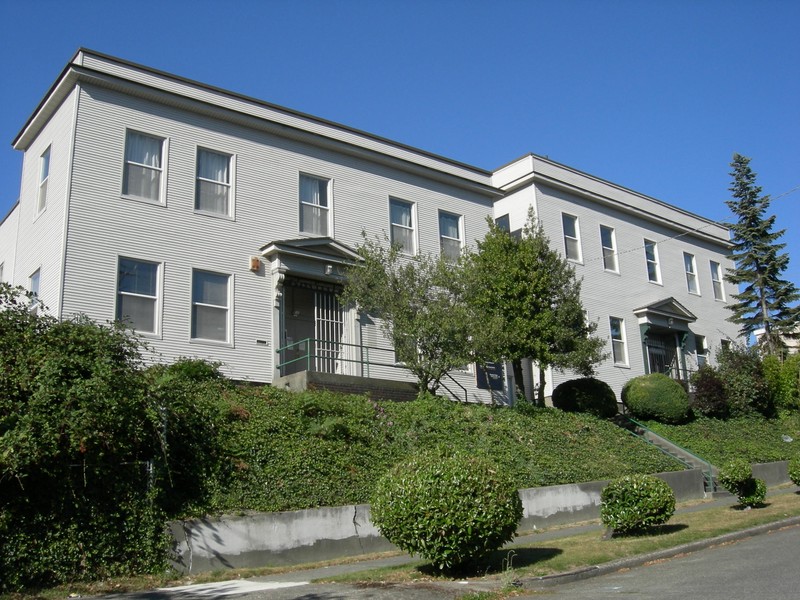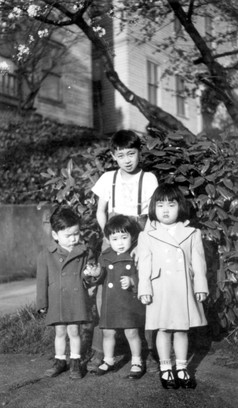Nihon Go Gakko / Seattle Japanese Language School
Introduction
Text-to-speech Audio
Images
Nihon Go Gakko (Japanese Language School) building, now home to the Japanese Cultural and Community Center of Washington (image from Wikimedia)

Japanese schoolchildren in front of Nihon Go Gakko (image from the Densho Encyclopedia)

Backstory and Context
Text-to-speech Audio
About Seattle's Nihon Go Gakko
The Seattle Nihon Go Gakko was originally located within the Furuya Company Building, owned by a prominent Japanese businessman at the turn of the twentieth century, and relocated in 1910 to a Buddhist temple's basement. The Issei (native Japanese) community raised $10,000 for construction of a dedicated facility to teach both the language and culture of Japan to their Nisei (children of native Japanese) children and Sansei (third-generation Japanese) grandchildren, and the first of the school's frame buildings was constructed in 1913. Ninety-eight students were enrolled the first year; by the 1930s, there were 1,800 students and three buildings. Classes at the Nihon Go Gakko met for two hours after regular, public school let out, and many of the teachers spent their weekends teaching at Japanese Language Schools in nearby communitie. The school was forced to shut down during the Exclusion Orders of 1942 against Japanese Americans, and the complex was used by the U.S. Army Air Force for a training facility; some of the school's graduates interrogated Japanese prisoners of war or translated documents during this time. After the war, the school housed 27 Japanese-American families who could not find housing upon their return to Seattle (2).
Gradually, the Seattle Nihon Go Gakko returned to its use as
a language school, with about 100 students by 1982, as well as programs in six public
Seattle high schools (2). In 2003, the Japanese Cultural & Community Center
of Washington (JCCCW) was established at the complex, with the goal of "preserving,
promoting and sharing Japanese and Japanese American history, heritage and
culture," though people of all backgrounds are welcome to participate in
the programs and events offered by the center, including fundraisers;
community, educational, cultural, and recreational events; the language school
and resource center; the Northwest Nikkei Museum and Nikkei Bunko Japanese
Language Library; and classes in martial arts, Japanese culture, and
traditional arts (1).
